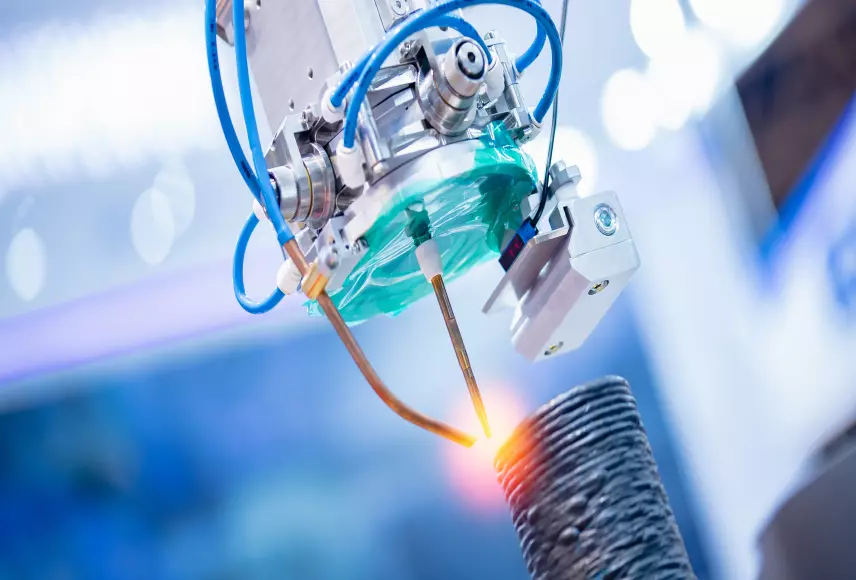- [email protected]
- 00974-50540047

Additive Manufacturing (AM) whether through LPBF, WAAM, or polymer extrusion — has revolutionized how we design and produce parts. It has opened the door to geometries that were once impossible, lightweight structures that outperform traditional designs, and customization at a level that meets the most demanding requirements. But with all this potential comes a persistent challenge: how do we ensure that every part produced is accurate, consistent, and free from defects?
The answer increasingly lies in the combined use of simulation and digital twin technologies. Together, they are transforming AM from a process often guided by trial-and-error into one that is predictable, adaptive, and rooted in real-time decision-making.
From Concept to Physical Reality
At its foundation, the AM process is the physical act of creating a part layer-by-layer. It begins with a 3D CAD model, which is then sliced into layers ready for printing. The build phase uses technologies such as LPBF, WAAM, or FDM to translate the digital model into a tangible component. Once printed, the part often undergoes post-processing — heat treatment, support removal, and surface finishing — before it is ready for use.
The difficulty lies in ensuring that the finished product truly matches the intended geometry, microstructure, and mechanical properties. Even minor deviations during printing can lead to costly rework, wasted materials, or outright failure in service.
The Role of Simulation
Before the first layer of material is deposited, simulation offers a powerful way to predict and optimize outcomes. It models the thermal behavior of the build, estimates residual stresses, forecasts potential distortions, and even anticipates microstructural changes. By running these virtual tests in advance, engineers can adjust process parameters, refine scanning strategies, and avoid many of the issues that would otherwise emerge only after printing. This not only shortens development cycles but also minimizes the waste of both time and materials.
Digital Twins: A Living Model of the Build
Where simulation predicts, a digital twin reacts. A digital twin is a dynamic, constantly updated virtual replica of the AM process, built from live data collected during printing. It integrates information from sensors monitoring melt pool conditions, laser power, and temperature profiles, and compares this in real time against predictive models.
If a deviation is detected — for example, an overheating melt pool — the digital twin can immediately recommend or even execute corrective actions such as adjusting laser power. This tight feedback loop means that potential defects can be prevented before they form, turning AM into a truly controlled process rather than one that simply hopes for the best.
The Synergy Between Simulation and Digital Twins
Simulation and digital twins are most powerful when used together. Before printing, simulation sets the stage by identifying optimal parameters and anticipating issues. During printing, the digital twin monitors reality against those expectations and intervenes as needed. After printing, the comparison between predicted and actual results provides insights that refine the process for future builds.
This continuous improvement cycle ensures that each new part benefits from the lessons of the previous one — an evolution toward greater reliability and efficiency with every build.
Transforming Industries
This approach is already reshaping industries. In the energy sector, digital twins help monitor the health of turbines, while simulations predict when components will need replacement. AM then produces optimized parts quickly, minimizing downtime. In healthcare, patient-specific digital twins derived from medical scans allow implants to be virtually tested before manufacturing, leading to better surgical outcomes and faster recovery times. In motorsports, where speed of innovation can determine the winner, teams rely on digital twins to evaluate aerodynamics and structural performance, using AM to produce and test new designs in record time.
Looking Ahead
The integration of simulation and digital twin technologies is no longer limited to large corporations. Universities, R&D centers, and specialized manufacturers now have access to these tools, enabling them to deliver higher quality, reduce costs, and accelerate innovation.
By merging the foresight of simulation with the adaptability of digital twins, Additive Manufacturing is evolving from a reactive process into one of proactive quality assurance — and in doing so, it is redefining the limits of modern manufacturing.